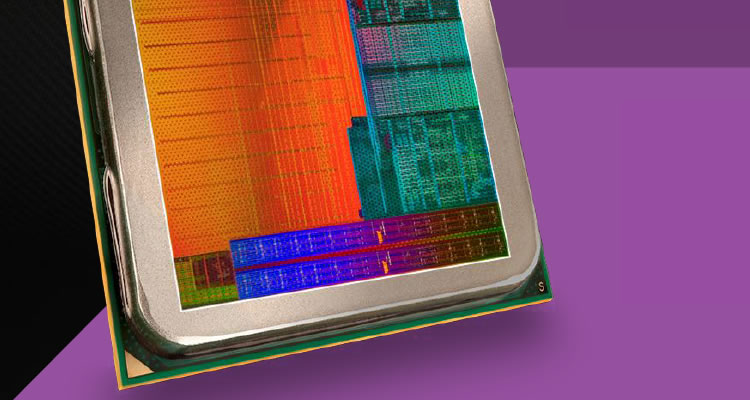Clock-to-Clock Performance
Before we move on, we wanted to take a closer look at how Kaveri and Richland compare in a clock-to-clock situation. We underclocked both the A8-7600 and A10-6800K to 3.0GHz while also disabling Turbo and any power saving technologies to lock that frequency. The memory was set at 2133MHz and we manually configured the timings. Here are the results...
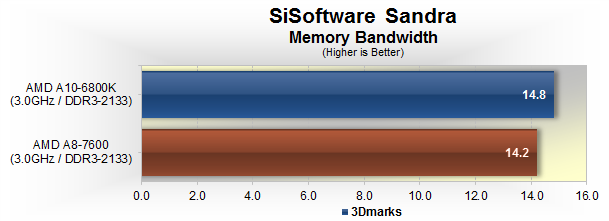
The A8-7600 is slightly slower than the A10-6800K in SiSoftware's memory bandwidth test, which is surprising since it previously managed to matched the A10-6800K with its clock speed disadvantage. Still, the A8-7600 was just 4% slower – hardly a significant margin.
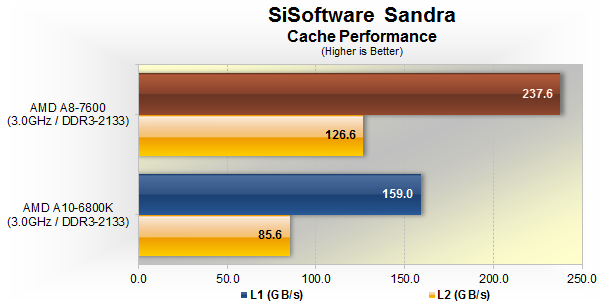
Things turned around for the A8-7600 when measuring L1 and L2 cache bandwidth with Kaveri offering almost 50% more bandwidth than the A10-6800K.
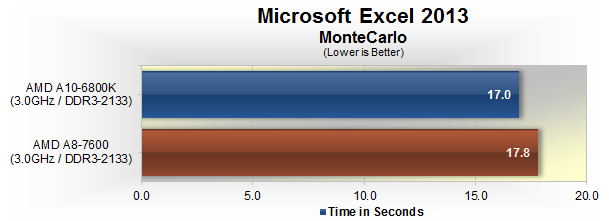
Although the clock-to-clock results show that the A8-7600 is just 4% slower than the A10-6800K, we're surprised it's slower at all.
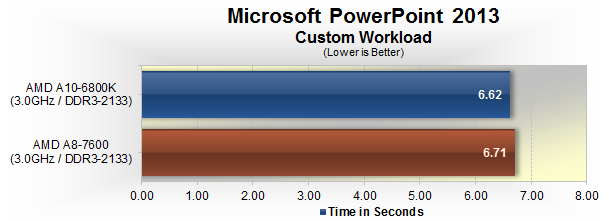
Likewise, it slipped behind the A10-6800K when testing with PowerPoint 2013, albeit by a 1% margin. Again, the thing is, we expected it to come out on top.
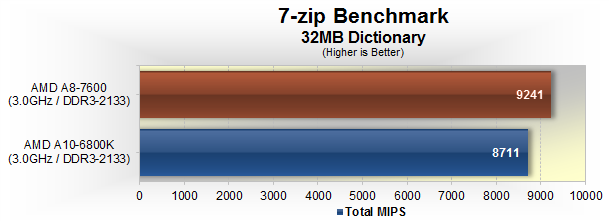
The A8-7600 had previously performed well in the 7-zip benchmark so it's not surprising that it lead the A10-6800K by 6%.
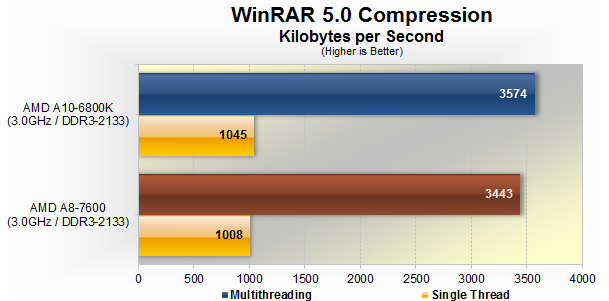
Despite enjoying an easy win with 7-zip, the A8-7600 fell behind the A10-6800K by 4% in WinRAR.
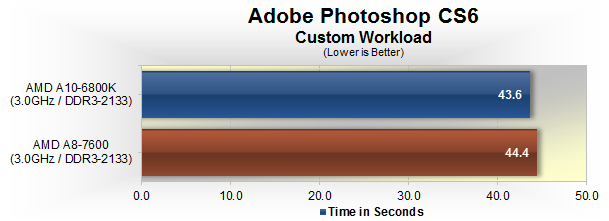
The A8-7600 already took a beating from the A10-6800K in Photoshop CS6, and while the A8-7600 was only a second slower, the older Richland architecture was still quicker.
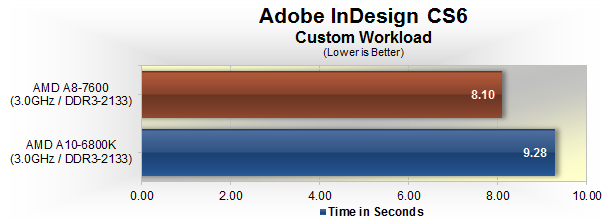
Clock-to-clock in InDesign CS6, the A8-7600 outperformed the A10-6800K by 15% at 8.10 seconds versus 9.28 seconds – a major improvement over the 37% disadvantage it had against the same chip at its stock speed.
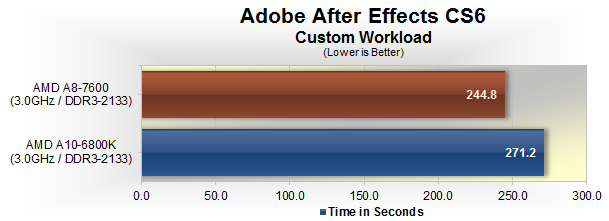
The A8-7600 easily defeated the A10-6800K in After Effects CS6, taking just 244.8 seconds to complete the workload for an 11% lead.
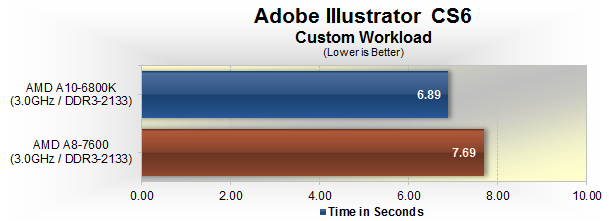
The A8-7600 was clearly slower than A10-6800K in Illustrator CS6 at 7.69 seconds versus 6.89 seconds – a 12% gap.
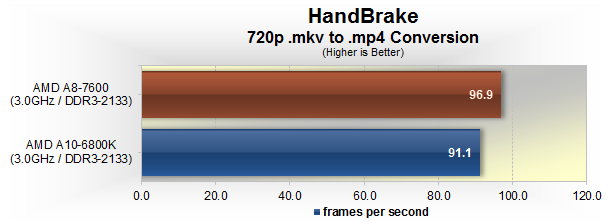
The A8-7600 has an edge in HandBrake, however, delivering 5% more performance than the A10-6800K.
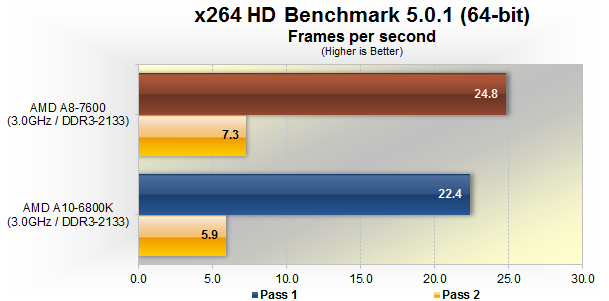
AMD's latest APU was also 11% faster than the A10-6800K in the first pass and 24% faster in the second pass of x264 HD Benchmark 5.0.1.
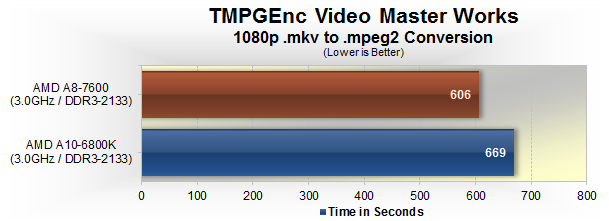
The A8-7600 is obviously better optimized for encoding as it was 10% faster than the A10-6800K, taking 606 seconds instead of 669 seconds when converting a 1080p video from mkv to mpeg2.
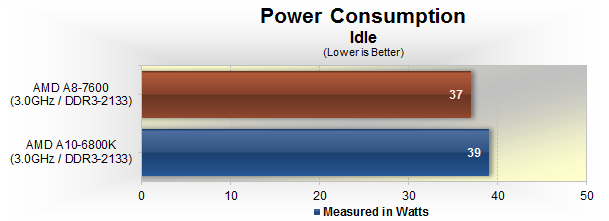
Clock for clock, the idle consumption of the A10-6800K isn't actually that much worse than the A8-7600 with the latter using just 5% less power.
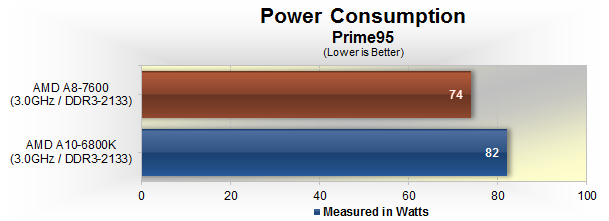
That changed under load though as the A8-7600 consumed 10% less power than the A10-6800K.
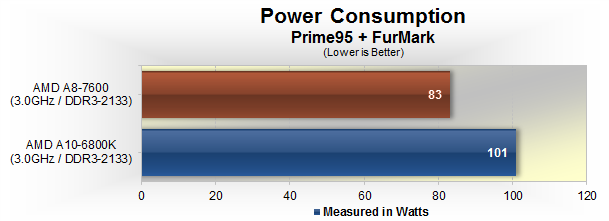
With the CPU and GPU taxed, the A8-7600 used 18% less power than the A10-6800K.
